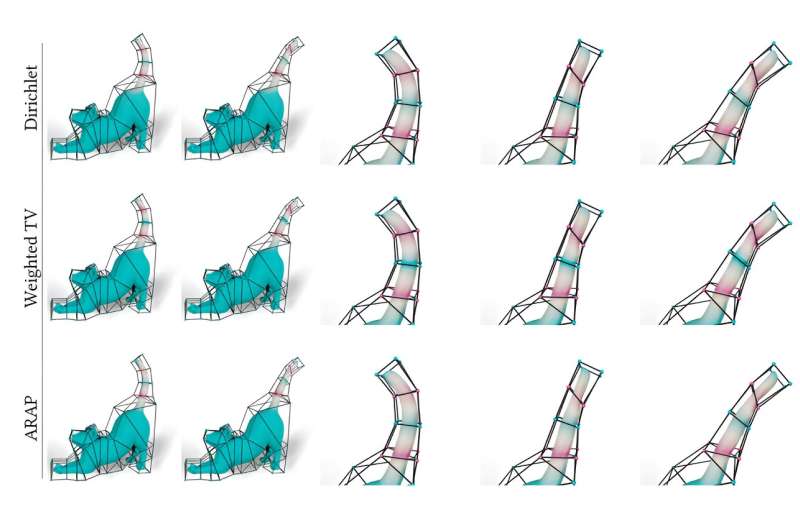There is a lot to applaud about human knowhow, but honestly speaking, nothing deserves that recognition than our knowledge in terms of improving at a steady clip. This unfaltering commitment towards getting better, under all …
There is a lot to applaud about human knowhow, but honestly speaking, nothing deserves that recognition than our knowledge in terms of improving at a steady clip. This unfaltering commitment towards getting better, under all possible circumstances, has brought the world some huge milestones, with technology emerging as quite a major member of the group. The reason why we hold technology in such a high regard is, by and large, predicated upon its skill-set, which guided us towards a reality that nobody could have ever imagined otherwise. Nevertheless, if we look beyond the surface for one hot second, it will become clear how the whole runner was also very much inspired from the way we applied those skills across a real world environment. The latter component, in fact, did a lot to give the creation a spectrum-wide presence, and as a result, initiated a full-blown tech revolution. Of course, the next thing this revolution did was to scale up the human experience through some outright unique avenues, but even after achieving a feat so notable, technology will somehow continue to bring forth the right goods. The same has turned more and more evident in recent times, and assuming one new discovery ends up with the desired impact, it will only put that trend on a higher pedestal moving forward.
The researching team at Massachusetts Institute of Technology has successfully developed a new technique, which uses 200-year old geometrical foundations to help artists improve animations. According to certain reports, the stated method comes well-equipped with the means to generate mathematical functions known as barycentric coordinates. These barometric coordinates, in turn, define how 2D and 3D shapes can bend, stretch, and move through space. Before we get any further into this development, though, we must try and understand how traditional methods have approached the given task. You see, up until now, whenever an artist would animate a 2D or 3D character, they would, more often than not, surround the complex shape of the character with a simpler set of points, points that were connected by line segments or triangles, thus forming something like a cage. But what’s the problem with this method? Well, it lies in figuring out how the character moves when the cage is modified. Now, studies in the past have used complicated equations to find cage-based motions that are extremely smooth and avoid kinks that could develop in a shape when it is stretched or bent to the extreme, but having said so, there are many notions of how the artistic idea of “smoothness” translates into math, each of which leads to a different set of barycentric coordinate functions. Coming to MIT’s latest brainchild, it focuses on a more universal methodology to let artists effectively browse through smoothness energies for any shape. After they have done that, the artist can then preview the deformation and choose the smoothness energy which fits best alongside their needs. Talk about barycentric coordinates, first introduced back in 1827; the said method was conceived to dictate how each corner of a shape exerts influence over the shape’s interior. This promised proposition would, however, become quite muddled when used outside of a triangle. Making the whole limitation even worse is when you use these coordinated in a relatively complex cage, as that requires each barycentric coordinate to meet a set of constraints, while remaining as smooth as possible at the same time. MIT researchers, in their response against the given conundrum, used a special neural network to model the unknown barycentric coordinate functions. The said call was itself different from anything we had seen so far, considering neural networks are often roped in where the intention is to mimic human thought. Anyway, it simply meant that they baked the constraints directly into the network, so whenever it would generate solutions, they will always turn out to be valid. Such a maneuver allowed artists to design interesting barycentric coordinates without having to worry about mathematical aspects of the problem.
“As researchers, we can sometimes get stuck in a loop of solving artistic problems without consulting with artists. What artists care about is flexibility and the ‘look’ of their final product. They don’t care about the partial differential equations your algorithm solves behind the scenes,” said Ana Dodik, lead author of a paper on this technique. “The tricky part was building in the constraints. Standard tools didn’t get us all the way there, so we really had to think outside the box,”
In practice, the new method covers a shape with overlapping virtual triangles that connect triplets of points on the outside of the cage. Once this bit is duly completed, the neural network can come in to predict how to combine the virtual triangles’ barycentric coordinates to make a complicated, but smooth function.
The researchers have already conducted initial tests on their technique. During these tests, they showed that their method could generate more natural-looking animations than other approaches, like a cat’s tail which curves smoothly when it moves instead of folding rigidly near the vertices of the cage.
Having witnessed its efficacy, the researchers plan for the future includes trying different strategies to accelerate the embedded neural network. Apart from that, they also hope to build this method into an interactive interface which can empower an artist to easily iterate on animations in real time.




